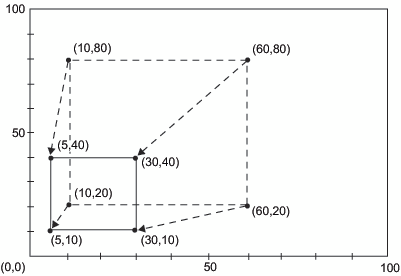%SCALE Macro
Scales input coordinates relative to the origin
(0, 0) based on the relationship between two ranges of minima and
maxima.
| Variables written out: | X, Y |
| Requirement: | You must run the %ANNOMAC macro before using any other annotate macros. For more information, see Making the Macros Available. |
Syntax
%SCALE (ptx, pty, x1, y1, x2, y2, vx1, vy1, vx2, vy2);
Parameters
- ptx, pty
-
specifies the coordinates to scale. Values can be numbers, numeric constants, or numeric variables. For details, see the Annotate X Variable.
- x1, y1
-
specifies the minima of the first range. Values can be numbers, numeric constants, or numeric variables.
- x2, y2
-
specifies the maxima of the first range. Values can be numbers, numeric constants, or numeric variables.
Details
The %SCALE macro reduces
or enlarges Annotate graphics elements that use two-dimensional, numeric
coordinates. The %SCALE macro does not affect graphics elements that
are drawn with text functions.
The difference between
the %SCALE and %SCALET macros is that the %SCALE macro always places
the origin at (0, 0) and plots the new coordinates with respect to
that origin. The %SCALET macro plots the new coordinates with respect
to the minima of the second range. For details, see %SCALET Macro.
The following example
uses the %SCALE macro to reduce x and y coordinates
by 50%, as shown in Using the %SCALE Macro to Reduce the Size of a Box.
%SCALE(x, y, 0, 0, 100, 100, 0, 0, 50, 50);
